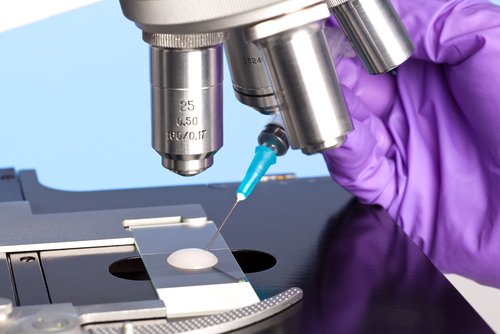Best Semen Analysis Center In Nagpur
Home Best Semen Analysis Center In Nagpur

Best Semen Analysis Center In Nagpur
What is semen Analysis?
Semen analysis, also known as a sperm count test, analyzes the health and viability of the sperm. Semen is the fluid containing sperm (plus other sugar and protein substances) that’s released during ejaculation. A semen analysis measures three major factors of sperm health:
- the number of sperm (sperm concentration)
- the shape of the sperm (morphology)
- the movement of the sperm (sperm motility)
Complete Semen Analysis-CSA
A CSA represents the most complete evaluation of ejaculated sperm from a semen sample. Typically 2 to 3 semen analyses are required to get a true baseline evaluation of sperm since sperm counts can vary significantly. Before testing, 2 to 5 days of absence is required.
The results of the semen analysis are the main component in male fertility testing. It is almost always the first fertility test ordered for males and oftentimes the only test needed. While it is useful, please note that the values of a normal semen analysis are only guidelines and are not a guarantee that significant male factor issues are not present.
The World Health Organization (WHO) has defined male infertility on the basis of the concentration of sperm in semen. While concentration is useful, many other factors need to be measured and have clinical significance. Most male fertility specialists believe that semen analysis is only a primary test and that future testing will allow for much more in-depth testing of sperm. A man is considered to be fertile by WHO criteria if he has at least 15 million sperm per ml.
WHO Guidelines for a “normal” semen analysis
- Volume: 1.5 ml to 5.0 ml
- Concentration (number of sperm present per ml of the ejaculate): greater than 15 million/ml
- Motility (percentage of sperm moving): 50% or more
- Forward Progression (of the moving sperm the strength of their forward movement): 2+ or more
- Morphology (percentage of normally shaped sperm): 30% or more normal shapes
Why undergo semen analysis?
Test for male infertility:
A semen analysis test is recommended when couples are having problems getting pregnant. The test will help a doctor to determine the male’s fertility. The analysis will also help to find out the problem of infertility using another test keeping semen analysis as a baseline test. The analysis will also help determine if low sperm count or sperm dysfunction is the reason behind infertility.
Why undergo semen analysis?
Test for male infertility:
A semen analysis test is recommended when couples are having problems getting pregnant. The test will help a doctor to determine the male’s fertility. The analysis will also help to find out the problem of infertility using another test keeping semen analysis as a baseline test. The analysis will also help determine if low sperm count or sperm dysfunction is the reason behind infertility.
What is it used for?
A semen analysis is used to find out if a problem with semen or sperm may be causing infertility. The test may also be used to see if a vasectomy has been successful.
A vasectomy is a surgery on the male reproductive system that’s done for birth control. To prevent pregnancy, a vasectomy cuts the tubes that carry sperm out of your testicles (testes) so that the sperm can’t get into your semen. A semen analysis is usually done 8 to 16 weeks after a vasectomy to make sure your semen has no sperm.
What do the results mean?
Your semen analysis will include many measurements that describe your semen and sperm:
- Volume is the amount of semen in your sample. A low volume may cause infertility.
- Sperm count is the number of sperm in the entire sample. A low count may make it difficult to get your partner pregnant.
- Sperm concentration measures how close together the sperm are in your semen. A low concentration may be a sign of a problem.
- Sperm movement (motility) tells you the percentage of sperm that are moving forward. Sperm must be able to move forward to fertilize an egg.
- Sperm shape (morphology) is the number of sperm that have a normal shape. Sperm with abnormal shapes may not be able to fertilize an egg.
- pH describes the acidity of your semen. Abnormal acidity can kill sperm or affect their ability to move.
- White blood cells (leukocytes) in sperm may be a sign that an infection is affecting your fertility.
How do I prepare for a post-vasectomy semen analysis?
This test is done after a vasectomy is performed, usually 8 to 12 weeks later. It’s helpful to masturbate several times after your vasectomy. This helps clear sperm from from your system. You may be able to provide a semen sample at home and then bring it to the lab.
How do I provide a semen sample to check fertility?
Providing a sample by masturbating is the preferred method. This usually takes place in a lab in a private, comfortable room. You put the sample into a sterile, wide-mouthed container.
If you are not able to masturbate due to religious reasons, you still have options. Your healthcare provider may give you a nonlubricated condom to use during intercourse.
